Key takeaways:
- Understanding wire types, resistance, and custom coil building enhances flavor and overall vaping experience.
- Quality supplies, including high-quality wire and organic cotton wick, are crucial for successful coil builds.
- Utilizing proper tools like precision wire cutters and coil jigs improves the consistency and effectiveness of builds.
- Common issues include scorching, inconsistent resistance readings, and leakage, which can often be resolved with minor adjustments.
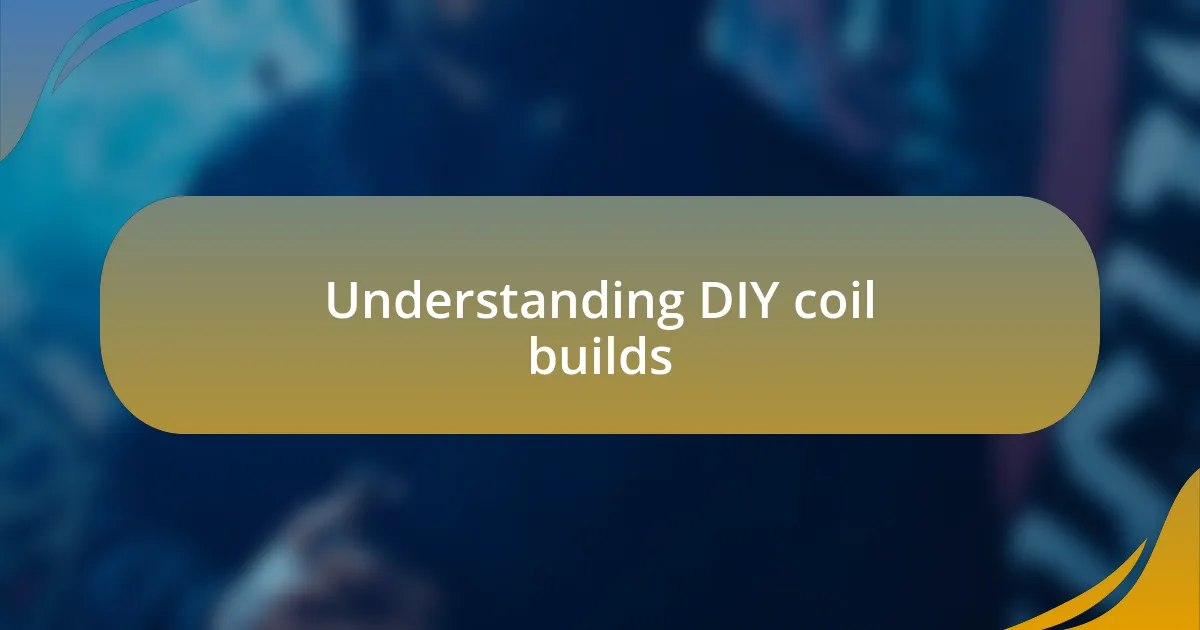
Understanding DIY coil builds
When I first delved into DIY coil builds, I was both excited and a little intimidated. The sheer variety of wire types, coils, and configurations can feel overwhelming. I remember standing in front of a display, wondering which one would give me that perfect balance of flavor and cloud production.
Understanding the basics of resistance and wire gauges is crucial, though. I often found myself experimenting, crafting a new build just to see how it would perform. The first time I wrapped a simple Clapton coil, I felt a thrill—like I was finally unlocking the secrets of my device. How does that sound? Not only does it look impressive, but the flavor was incredibly rich, something I had always craved.
What truly drives many enthusiasts to DIY builds is the ability to customize their experience. Have you ever wondered why some vapers stick to pre-built coils? For me, it was the satisfaction of knowing I could tweak my setup for improved performance. Each small change, like adjusting the number of wraps or switching the wire type, opened up a new level of personal taste and preference, making every session uniquely mine.

Importance of vape coils
Vape coils are the heart of any vaping experience, and their importance can’t be overstated. I remember the first time I noticed a dramatic change in flavor after switching coils; it was a game-changer. It made me realize that the right coil can elevate not just the taste but the overall satisfaction of vaping.
The resistance of a coil plays a pivotal role in controlling the temperature of the vapor. I once experimented with a lower-resistance coil, thinking it would provide denser clouds. What I didn’t expect was the explosion of flavor that came with it, along with the occasional dry hit. This experience taught me how crucial it is to understand the balance between resistance and wattage to ensure a consistently enjoyable vape.
Feeling the difference in vapor quality makes coil selection a personal journey for every vaper. Have you ever felt the joy of crafting a coil that just hits perfectly? When I finally nailed the perfect build, I felt a sense of pride, knowing I had tailored something uniquely suited to my preferences. That’s where the real magic of vaping lies—finding the right coil that resonates with your taste buds and enhances the experience.
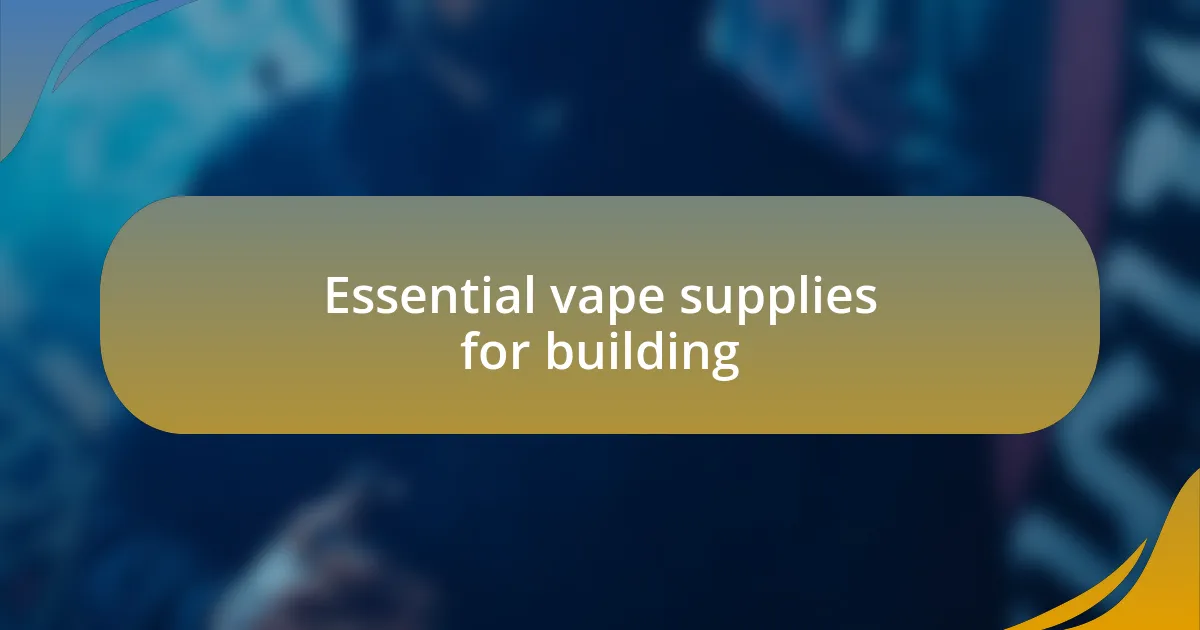
Essential vape supplies for building
When it comes to building coils, having the right supplies is essential. For instance, high-quality wire is a must. I remember my early days of trying to save a few bucks on lesser wire, only to end up disappointed with uneven heating and flavor. It taught me that investing in good kanthal or stainless steel wire pays off in the rich, consistent flavor profiles you achieve.
Cotton wicking, surprisingly, can make or break your coil build. I almost overlooked its importance until I experienced my first dry hit due to poor wicking. Now, I always opt for organic cotton specifically designed for vaping. It absorbs e-liquid effectively and provides a cleaner taste, allowing the subtle notes of my favorite flavors to shine through. Have you ever tried different wicking materials? You’d be amazed at how much they can influence your vaping experience.
Tools are another vital part of the coil-building process. Trust me, a decent pair of tweezers, a coiling tool, and a reliable ohm meter can make all the difference. I recall the frustration of trying to wrap coils by hand, only to have them come out uneven. After finally investing in a coiling jig, the consistency and ease of building were a revelation. It’s these little tools that transform coil-building from a chore into an enjoyable craft.
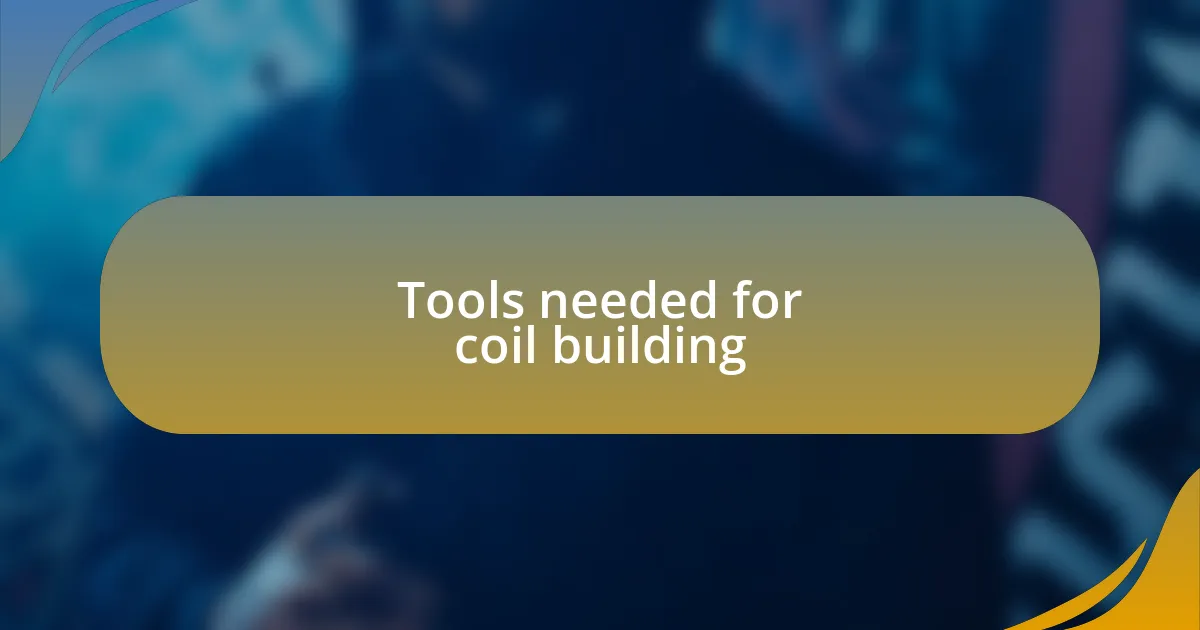
Tools needed for coil building
When diving into coil building, I quickly learned that the right tools can really elevate the experience. For instance, I underestimated the significance of a quality wire cutter. Early on, I used a cheap pair and ended up with jagged edges that created snags and ultimately affected my builds. Switching to a precision wire cutter not only made the job easier but also ensured clean cuts that improved my overall vaping performance.
Another indispensable tool is a good set of needle-nose pliers. I can vividly recall one evening spent trying to tuck in wicking material with my hands, only to create a mess that led to leaking. Once I started using pliers, I found it much easier to grasp the cotton precisely and tuck it neatly into the coil structure. It’s surprising how something so simple changed my entire approach to wicking!
Oh, and don’t forget about an ohm meter. I can’t tell you how many times I’ve built a coil only to feel that rush of anxiety while waiting for it to read correctly. My first experience with one was a game changer; I felt a sense of reassurance knowing I could double-check my resistance before firing it up. Have you ever had that moment of doubt? An ohm meter not only brings peace of mind but also empowers you to experiment with different builds safely. Each tool brings its own flair to the table, making coil building not just a task but a craft of precision.
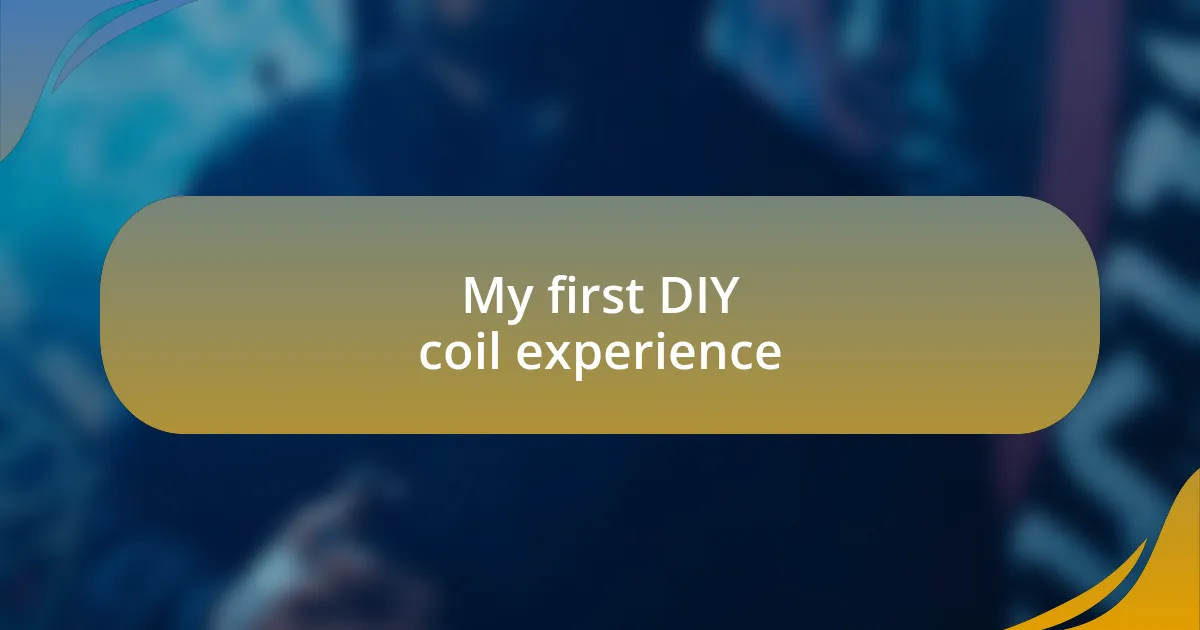
My first DIY coil experience
I remember the excitement and apprehension I felt when I decided to tackle my first DIY coil build. Sitting at my kitchen table, armed with only a basic tool kit and a plethora of online tutorials, I thought, “How hard could this really be?” Little did I know, I was about to embark on a journey that would transform my vaping experience entirely.
As I meticulously wrapped my first coil, I was surprised by how rewarding the process felt. Each rotation of the wire felt like I was crafting something special, almost like shaping a piece of art. However, it wasn’t long before I encountered my first hurdle—the dreaded “coil misfire.” Have you ever experienced that moment of panic when nothing seems to work? I remember my heart racing as I double-checked my connections, fearful that I’d messed something fundamental up.
After several attempts and some frustrating trial and error, I finally got the hang of it. Watching my coil glow evenly for the first time was exhilarating! It was a strong validation that all my effort was worth it. My first DIY coil experience wasn’t just about vaping; it was a lesson in patience, perseverance, and the sheer joy of crafting something uniquely my own.
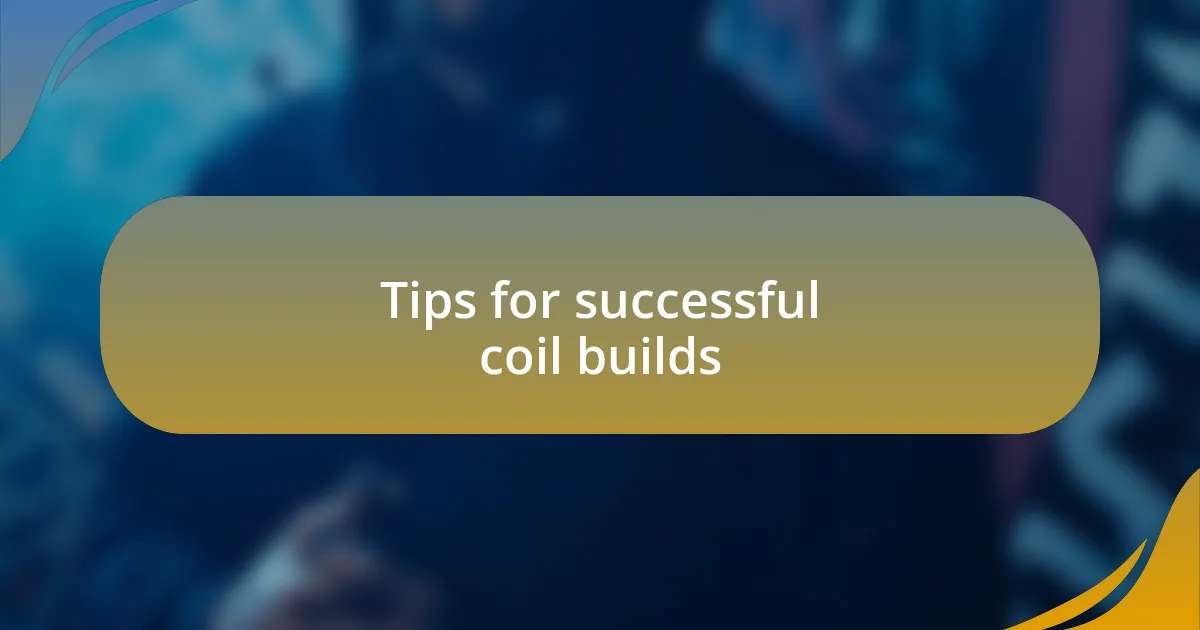
Tips for successful coil builds
One essential tip for successful coil builds is to ensure you use the right wire materials. I learned this the hard way when I first tried building with a wire that was too heavy. I quickly found that using a lighter gauge stainless steel made a world of difference in achieving the flavor and vapor production I desired. Have you ever felt the frustration of trying to get the right hit, only to realize that a simple wire choice was holding you back?
Another piece of advice I can’t stress enough is to focus on consistent wraps. I remember my early builds where my coils looked like a visual mess—loose wraps mixed with tight ones. It didn’t take long for me to realize that uniformity was key. I invested in a coil jig, and that tool transformed my builds; having evenly spaced coils not only improved performance but also made the process more visually satisfying.
Lastly, don’t underestimate the importance of proper wicking. I had moments where I’d nail the coil but completely miss the wick placement. A cotton wick that’s too tight can lead to dry hits, while one that’s too loose can cause leaks. I learned to find that sweet spot through practice and a few mistakes, which ultimately led to a more enjoyable vaping experience. How rewarding is it, though, when you’ve finally found that balance and you take that first, perfect puff?
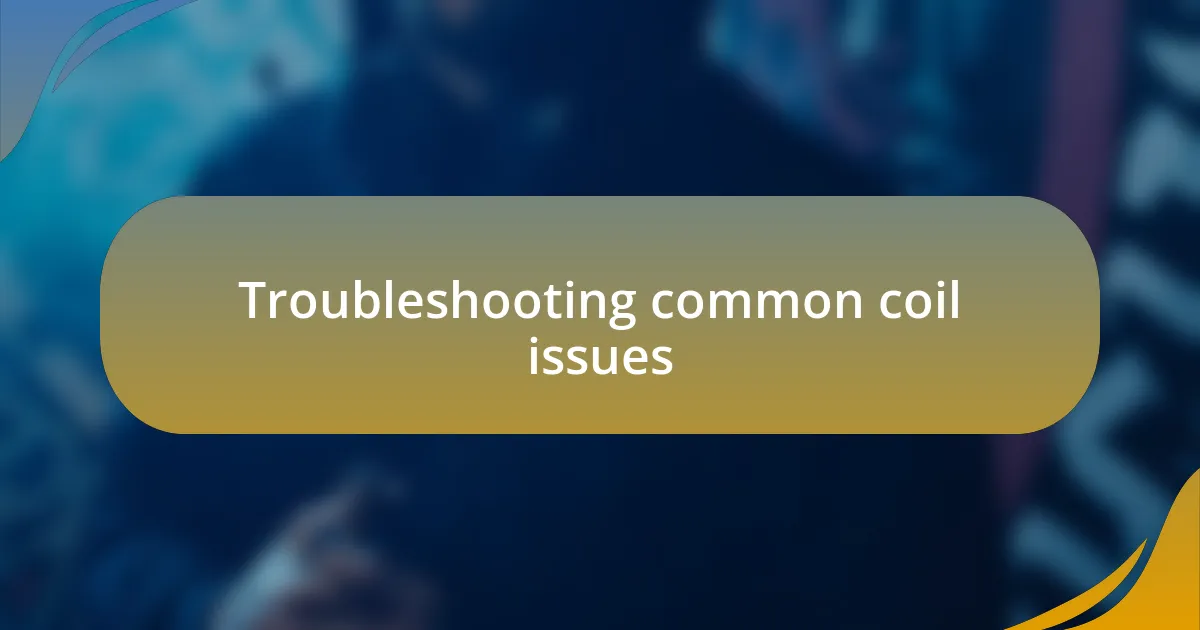
Troubleshooting common coil issues
One of the most common issues I faced with coil builds was scorching, which often happens if the coil is positioned too close to the wick. I vividly remember the first time I fired up a new build only to be greeted with a burnt taste. It hit me hard, and I quickly realized I needed to adjust the coil height. Have you encountered that overwhelming sensation of frustration when everything seems perfect, yet the flavor just doesn’t come through?
Another frequent problem is inconsistent resistance readings when using my ohm meter. I can still recall the pandemonium of checking my newly built coil and getting wildly varying readings. This inconsistency made me question my entire setup. Making sure the connections are tight and free of residue was a game changer. It’s funny how the simplest adjustments can save you from a headache, isn’t it?
Finally, I’ve had my fair share of leakage issues, especially when experimenting with different wick materials. I’ll never forget the time I thought I had everything figured out, only to find my device leaving a mess in my pocket. The key is finding the right amount of cotton to use; too much can create excess pressure, while too little won’t absorb adequately. How much time have you spent scrubbing away at leaks, hoping for that seamless vaping experience? Trust me, mastering this aspect brought me such peace of mind while I enjoyed every puff.